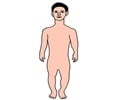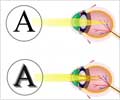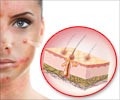What are the Types of Albinism?
Oculocutaneous Albinism (OCA) - It is the most common and severe form of albinism. It affectsthe eyes, skin and hair. People with OCA also suffer from vision defects, usually myopia or short sightedness and require glasses.
OCA can be categorized into different types based on the specific gene involved.
- In Type 1 albinism there is a defect in the metabolism of an amino acid called tyrosine that leads to failure in converting tyrosine to melanin. The conversion normally happens due to an enzyme called tyrosinase, however, if there is a defect in the enzyme it fails to happen.
- In Type 2 albinism there is a defect in the ‘P’ gene. In this type there is only minor defect in the pigmentation at birth.
- In Type 3 albinism there is a genetic defect in TYRP1, a protein related to tyrosinase.
- In Type 4 albinism there is a genetic defect in the SLC45A2 protein that helps the tyrosinase enzyme to function.
Ocular Albinism (OA) - In this condition the skin color is usually normal and eye color may be in the normal range. But close examination of the eye reveals that there is no pigment in the retina. It accounts for about 10 to 15% of the albinism cases. It can be inherited either by an X-linked or an autosomal recessive process.
There are some conditions in which there is only a specific area of the body that is affected by the condition. These include-
Waardenberg Syndrome - In this type of syndrome there is only a small lock of hair on the forehead that is white and not pigmented or there maybe just one or both eyes (the iris) that has absence of pigment.
Chediak-Higashi Syndrome - Lack of melanin pigment all over the body with few areas being spared.
Tuberous sclerosis (white leaf macule) - Tuberous sclerosis are small localized areas of de-pigmentation.
Hermansky-Pudlak Syndrome (HPS) - This condition is associated with a great range in degrees of pigmentation, from no pigmentation to almost normal coloring. Vision usually ranges from 20/60 to 20/200(normal vision is 20/20). People with HPS lack dense bodies in their blood platelets, which are responsible for releasing clotting factors. It is a single-gene disorder inherited in an autosomal recessive manner. It is a form of albinism associated with a bleeding tendency (bleeding disorder) along with problems of lungs (lung fibrosis) and bowel diseases.











